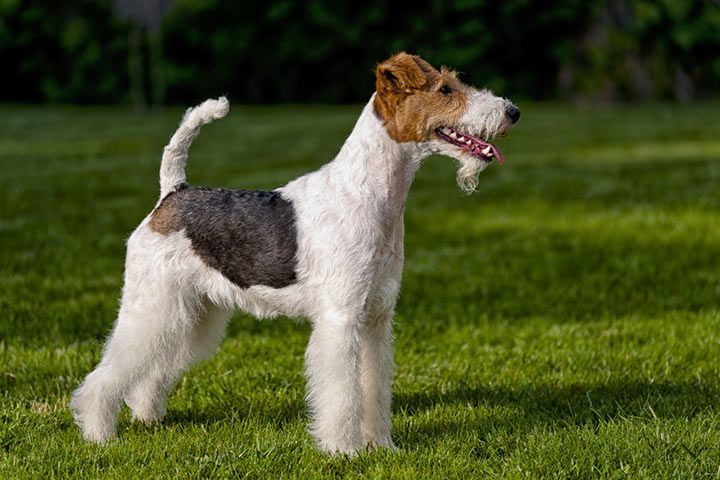Fox Terrier
Fox Terrier Dog Breed Information
| Size | 15-16 inches (38-39 cm) |
| Weight | 13-18 lbs (6-8 kg) |
| Origin | Great Britain |
| Color | White, brown, beige; multi-colored |
| Lifespan | 10-13 years |
| Suitable As | Family dog, companion dog |
| Personality | Spirited, adventurous, loyal, boisterous, lively |
| Exercise | |
| Drooling | |
| Shedding | |
| Grooming |

Breed Characteristics
The Fox Terrier is a bundle of mischief. They’re known for tricks and playfulness, and will always make you laugh. It may be small, but it has a whole lot of energy, is very self-confident, bold and curious. Fox Terriers need a lot of exercise, they like digging, they can jump very high (risk of escape!) and they do bark a lot (high-pitched). In return, they are easy to train and make good watchdogs.
Discipline and Training
If you’re experienced with dogs, you’ll do well with a Fox Terrier. Even beginners won’t struggle too much with training but it does take a lot of patience, consistency, firmness and clarity to properly train a Fox Terrier. This is often a new situation and challenge for beginners. The best idea is to take your dog to obedience lessons and read good training guides (and follow the advice!).

Pros and Cons
Pros
- Easy to train
- Easy grooming
- Hardly sheds at all
- Good guard dog
Cons
- Not a "beginner" dog
- Lots of energy
- Needs lots of exercise
- Needs good socialization
- Likes to dig
- Strong prey drive
Behavior
Towards Strangers and Small Animals
These dogs are friendly to people within their family and to strangers. But this does not apply to pets such as hamsters, guinea pigs, rabbits and so on, because the Fox Terrier used to be a hunting dog and it is too likely that it will try to catch them.
Towards Other Dogs
The Fox Terrier doesn't get along well with other dogs, too. It starts to mess with them too quickly, no matter if the other dogs are bigger or not. So this dog isn’t suited to trips to the park where it will meet lots of new dogs. To make sure that this disruptive behavior is kept to a minimum, puppies should play with other dogs as much and as early as possible. This means that the dog will be considerably friendlier and calmer later on in life.

Sometimes “In”, Sometimes “Out”
In the US, Fox Terriers are rare. Even in Germany, they are not among the top 10. That's because sometimes particular dog breeds are "in" and sometimes not.
According to German Kennel Club VDH there were more Fox Terrier puppies in 2003 than Border Collie, Chihuahua, Beagle, Havanese or Bernese Mountain Dog puppies in 2018 (in Germany). We believe that this cute, little dog will soon come back into fashion - so this is a good reason to take a closer look at this guy!
After all, Fox Terriers won more titles in the „Best in Show“ category at the Westminster Kennel Club Dog Show in New York than any other dog breed. In this competition, the winners of each breed group compete for the title „Best in Show“.
Appearance
There are two types of Fox Terriers: the smooth and the wire-haired. The Smooth Fox Terrier is sleek and elegant, the Wire Fox Terrier is more pretty and curly-wurly.

History and Origin
The Fox Terrier originated around the 19th century and was used in fox hunting in England.
Where Does the Name Come From?
Terrier comes from the French word for earth: terre. Some people say that Terrier comes from terror, but of course this is a joke. They just want to state that these dogs have a very lively character in a fun way.
Health and Care
While Smooth Fox Terriers shed more than Wires, the Smooth Fox Terriers' coat is easier to care for. The dogs have a white coat with black and/or brown fur markings.
Fun Facts
The British naturalist Charles Darwin had a Fox Terrier.
Comparable Breeds



































